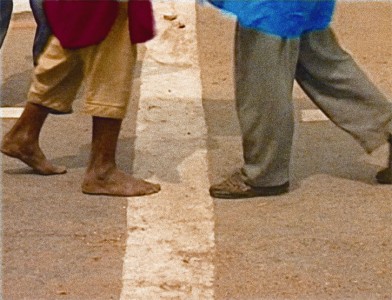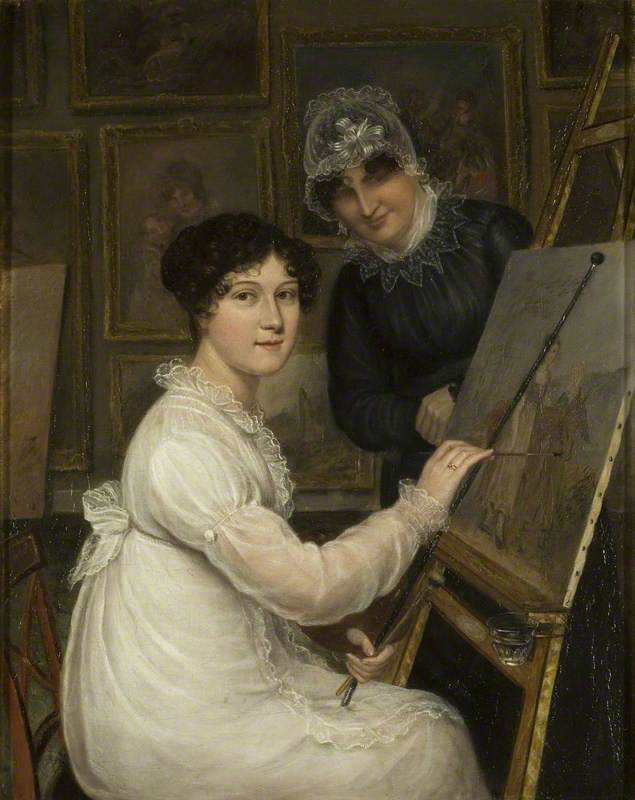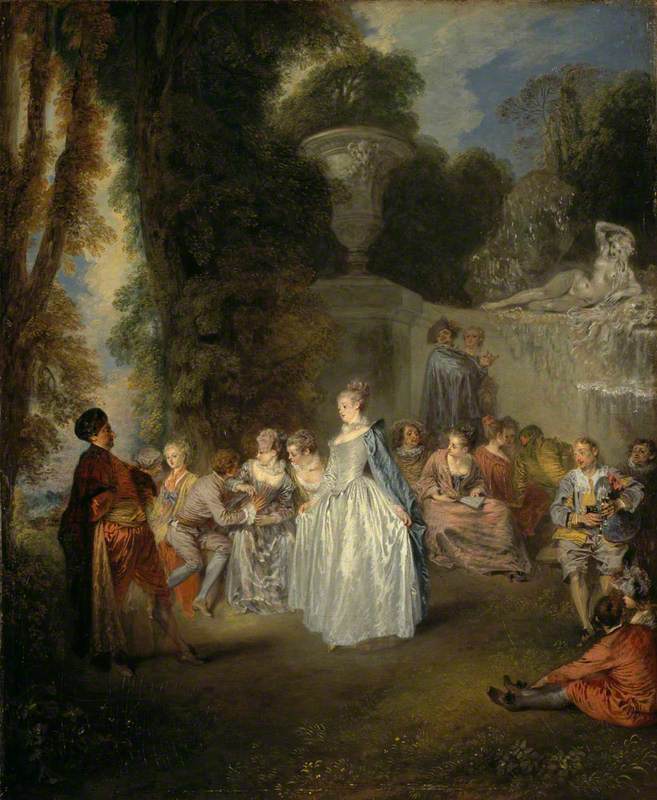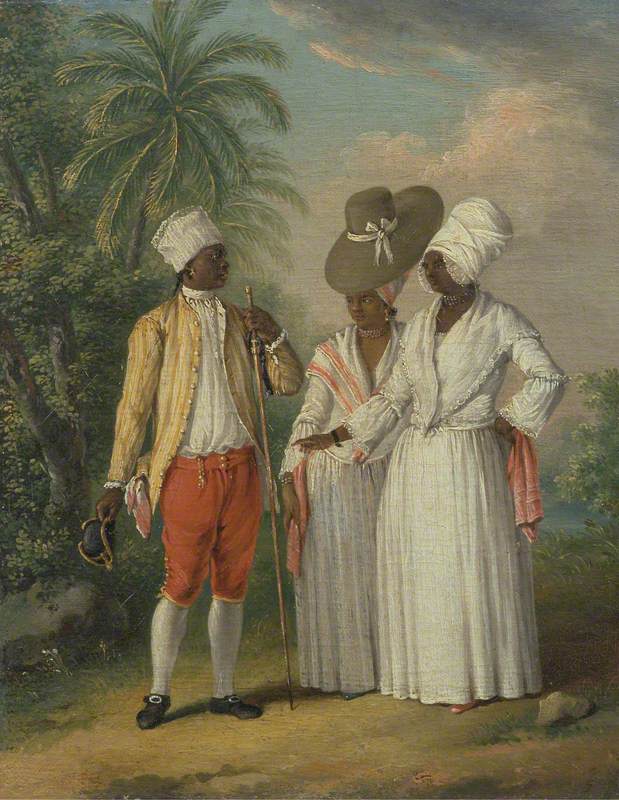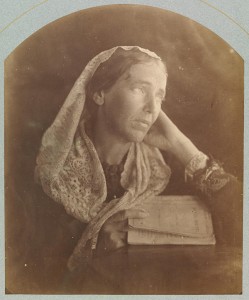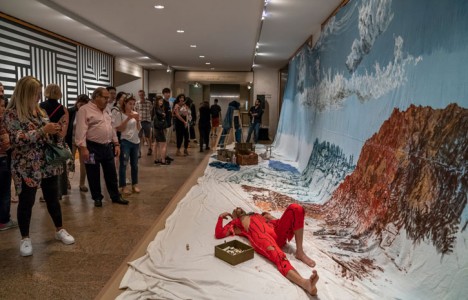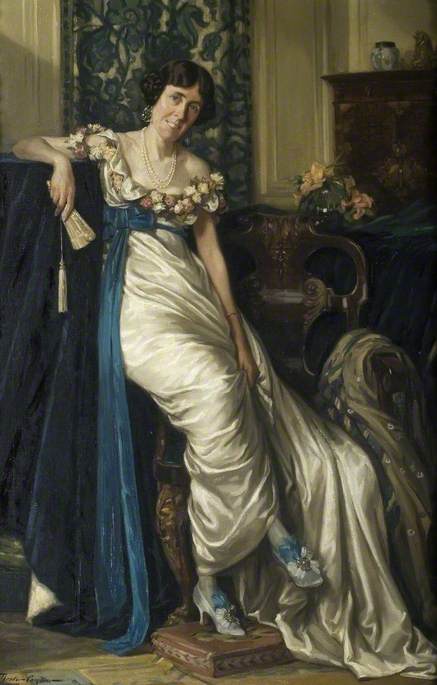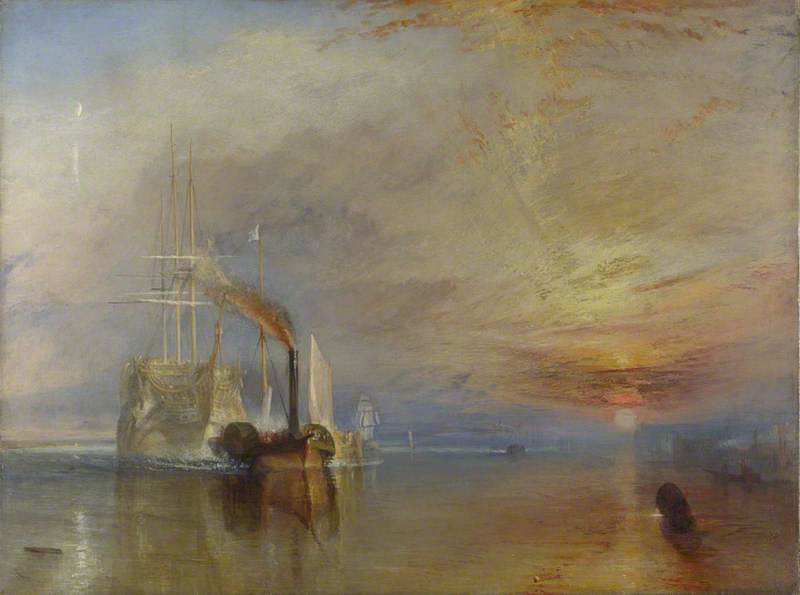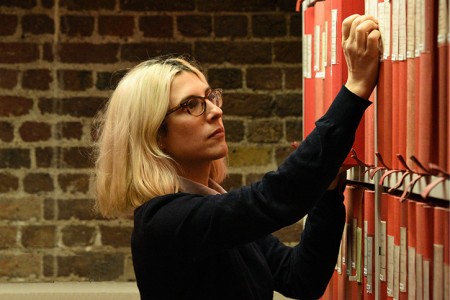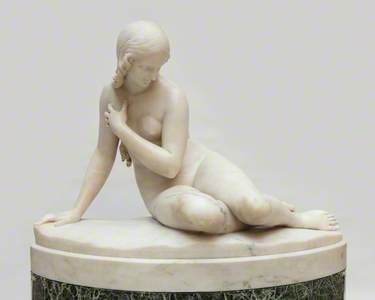The year 2023 is the 200th anniversary of Bristol Museums.
The museum service originally began as 'The Bristol Institution for the Advancement of Science, Literature, and Fine Art', which officially opened on 6th January 1823. The Bristol Institution was a private society which engaged in a number of cultural activities, such as collecting fine art and hosting temporary exhibitions.
The exhibition 'Opulent Origins: 200 Years of Displaying Fine Art' investigates the Bristol Institution through the fine art collection. Archival materials from the National Art Library and Bristol Archives have allowed us to contextualise the founding organisation and reimagine the first exhibitions of pictures hosted by the Bristol Institution in the 1820s.
Contextualising the Bristol Institution (1823–1871) The Bristol Institution in 1825
c.1835, ink & watercolour on paper by Alfred Montague (1832–1883)
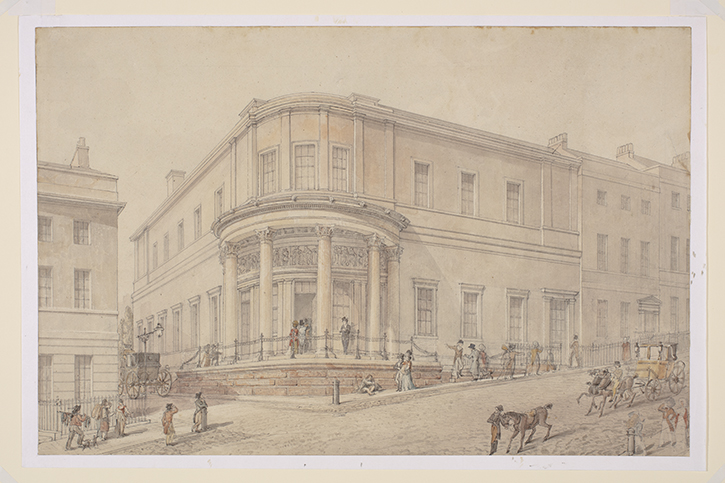
This delicate watercolour depicts the Bristol Institution as it was in 1825, two years after its opening. The Bristol Institution on Park Street was the city of Bristol's first purpose-built Museum. The aim of the Institution was to 'disseminate useful knowledge through lectures and experiments' and 'promote the advancement of science, literature, and the fine arts'. The Institution was essentially a private members club, and typical of the cosmopolitan 'learned societies' appearing throughout the United Kingdom in the Georgian period.
Montague's drawing provides us with a glimpse into city life, and the social stratification of 1820s Bristol. The well-to-do-looking people entering the Institution building are in contrast to the individual seated on the Institution's bottom step, who appears to be begging for change.
Share Certificate for the Bristol Institution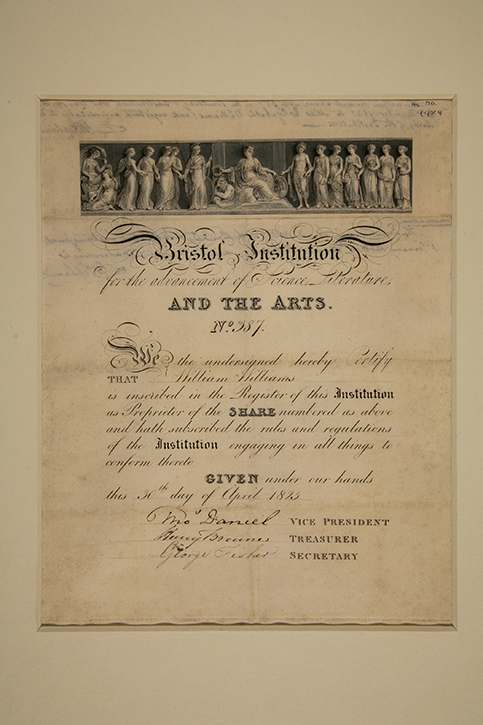
This share certificate would have been presented to a shareholder of the Bristol Institution. The Institution consisted of about 150 founding members and subsequent subscribers who made up the upper echelons of Bristol society at the time. The Institution would have attracted wealthy Bristolians who were interested in culture and contributing to civic life. Institution membership would have also helped members to secure social advancement and business contacts.
Bristol Institution membership was formed by a large cross-section of affluent Bristol society. Despite the abolition of the slave trade in the British Empire in 1807, many Institution members would have inherited generational wealth amassed from colonial and enslaving exploits. Many members would have further benefited from compensation issued by the British Government in 1837. Bristol Museums endeavours to continue confronting this aspect of our history, approaching objects with honesty, and combatting attitudes which continue to cause harm.
Detail of the Share Certificate for the Bristol Institution
1825, print by unknown maker. The detail shows Edward Hodges Baily's bas-relief carving from the Bristol Institution building on Park Street 
Illustrated at the top of the share certificate is the bas-relief frieze which the Bristol sculptor Edward Hodges Baily (1788–1867) gifted to the Institution in 1823. This carving was installed under the entrance portico to the Institution building and can still be viewed today. The frieze contains an allegory of the fine arts being introduced to Bristol. Bristol is personified as a female figure, seated on a male figure who symbolises the River Avon. On either side of 'Bristol' are female figures who symbolise the arts, literature and science.
Bristol Institution Park Street, Elevation and Plan
c.1828, print by J. Tovey 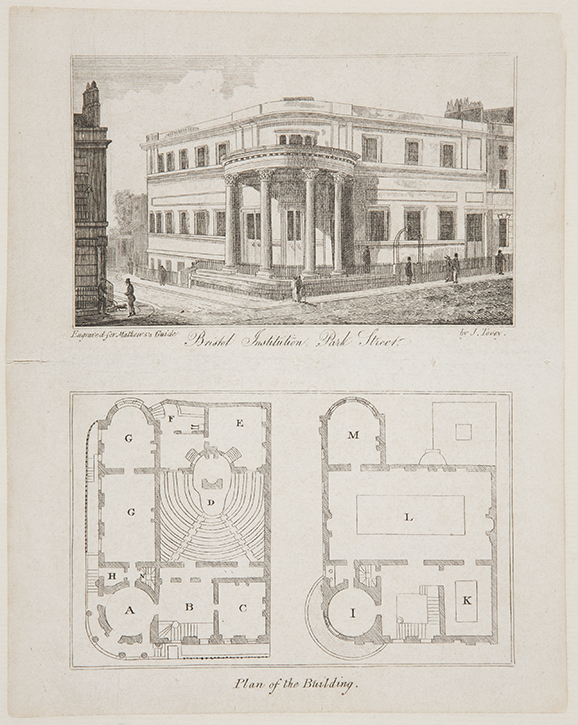
The Institution was built for £11,000 by the London-based architect Charles Robert Cockerell (1788–1863). Cockerell studied under Robert Smirke, and was an archaeologist involved in many major discoveries in Greece, where he spent a large portion of his Grand Tour.
This building plan suggests the variety of activities which were taking place in the Institution. There was a sizeable library with multiple reading rooms, a lecture theatre with the capacity for 400 people and a laboratory.
An exhibition room and a statue room were specifically designed by Cockerell for the Institution. The local sculptor E. H. Baily located classical casts and offered them to the Institution in January 1827. The statue room displayed classical casts such as the Apollo Belvedere, Laocoon Group, and the Venus de Medici.
Reimagining the 1820s exhibitions
Between 1820 and 1831, at least six temporary exhibitions of pictures were hosted by the Bristol Institution's Sub Committee for the Fine Arts. Following in the footsteps of the British Institution (founded 1805), the Bristol Institution either hosted exhibitions of paintings by Old Masters or contemporary (at the time) British artists.
The first exhibition ('Pictures by Old Masters') was hosted in June 1824. Entrance cost one shilling (around £5 today) and an accompanying catalogue was sold.
The early exhibitions of pictures consisted of paintings borrowed from private collectors, many of which found their way back to the permanent collection.
'Opulent Origins' revisits those early displays with paintings which recreate and approximate the 1820s exhibitions.
The Bristol School painter Edward Villiers Rippingille (1798–1859), was heavily involved with the Bristol Institution. This theatrical painting was loaned to the Bristol Institution's 1826 Exhibition of Pictures by the local iron founder and merchant, Daniel Wade Acraman (1775-1847).
In 1823, Rippingille had been elected an Honorary Member of the Institution and was supported by three of Bristol's wealthiest patrons. He co-curated the first painting exhibition in 1824 alongside Acraman and delivered a series of lectures on the fine arts.
Paintings by the French Baroque painter Charles Le Brun were loaned by collectors to the Bristol Institution's first exhibitions of pictures by Old Masters in 1824. This particular painting has been in the collection since 1905 when The Right Hon. Lewis Fry (1832–1921) donated it. The Frys were a family of Quaker chocolate manufacturers. Both Lewis and his father had been shareholders in the Bristol Institution.
Hannah More (1745–1833) was born in Fishponds, Bristol. She was a playwright, philanthropist, anti-slavery reformer, teacher and moralist. More was active in the Bristol Institution and in 1825, the Sub-Committee for the Fine Arts made a 'special application' to loan a portrait of More for that year's exhibition.
In 1825, More presented a book to the library 'with her autograph expression of great interest in the welfare of the Institution.' In May 1828, she donated 'an inkstand made from Shakespeare's Mulberry Tree'. When More died in September 1833, she left money to the Institution. Hannah More was around 35 years old when Frances Reynolds painted this portrait in 1780.
A 'Smalschip' with Sail Set at Anchor Close to the Shore, and a 'Boier' Laid Ashore
1650–1660
Willem van de Velde II (1633–1707) 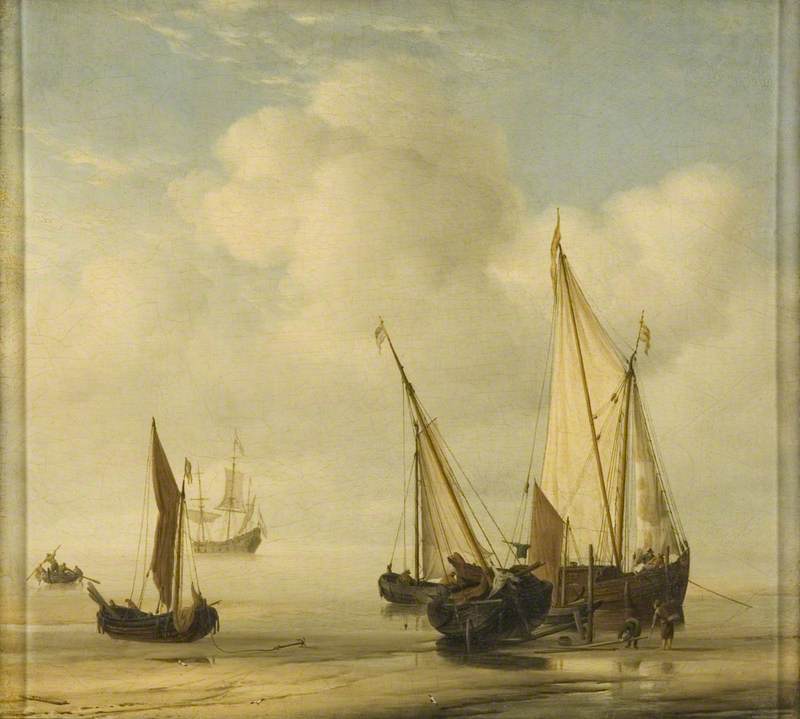
Local maritime identity in Bristol meant that naval painters were popular in Bristol collections. Collectors also sought to emulate aristocratic tastes. It would have been well-known that the Van de Veldes were hired by Charles II to live and work at Greenwich Palace in the 1670s. Dutch maritime paintings appeared prominently in the Bristol Institution's 1820s exhibitions.
The Cutting-Out of the French Corvette 'La Chevrette'
1802
Philip James de Loutherbourg (1740–1812) 
This large oil on canvas depicts a well-known incident from the Napoleonic Wars, when, on 21st July 1801, British forces captured the French ship La Chevrette at Brest, off the coast of Normandy. This painting was displayed at the Bristol Institution's Third Exhibition of Pictures in 1826.
In 1824, Charles Hare bought this picture from the engraver James Fittler for £200 (around £19,000 today). Hare was an active member of the Bristol Institution and a wealthy merchant who made his money from floorcloth (carpet) manufacturing.
The Stoppage of the Bank
1825–1831
Rolinda Sharples (1793–1838) 
This genre painting – a depiction of everyday life – was premiered at the Bristol Institution's 1826 Exhibition, where it was met with an 'abundance of pride and praise'. The artist, Rolinda Sharples, refused portrait commissions for some time so that she could concentrate on this picture, which depicts the Bristol Bullion Bank failure of 1825.
Though Bristol Museums is today a vastly different organisation from the Bristol Institution, the legacy of the Bristol Institution is embedded within the collections and the service's origins. One of the first acquisitions made by the Bristol Institution was Eve at the Fountain, a marble sculpture by Edward Hodges Baily. The Institution's Sub Committee for the Fine Arts paid Baily out of proceeds made from the 1826 'Exhibition of Pictures'.
Despite the many changes which have taken place in the past 200 hundred years, Eve still maintains centre stage in Bristol Museum & Art Gallery, monumentally overseeing all that continues to take place.
Emma Meehan, Art Fund Curatorial Trainee to Bristol Museums and The National Gallery
'Opulent Origins: 200 Years of Displaying Fine Art' is showing at Bristol Museum & Art Gallery until 19th November 2023
This story has been made possible through the National Gallery's Curatorial Traineeship Programme supported by the Art Fund with the assistance of the Vivmar Foundation


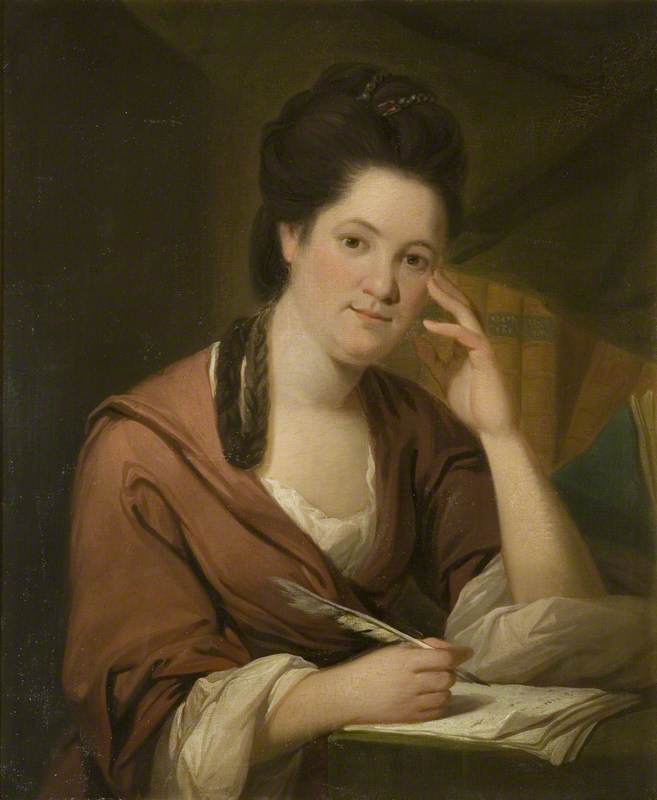

.jpg)

